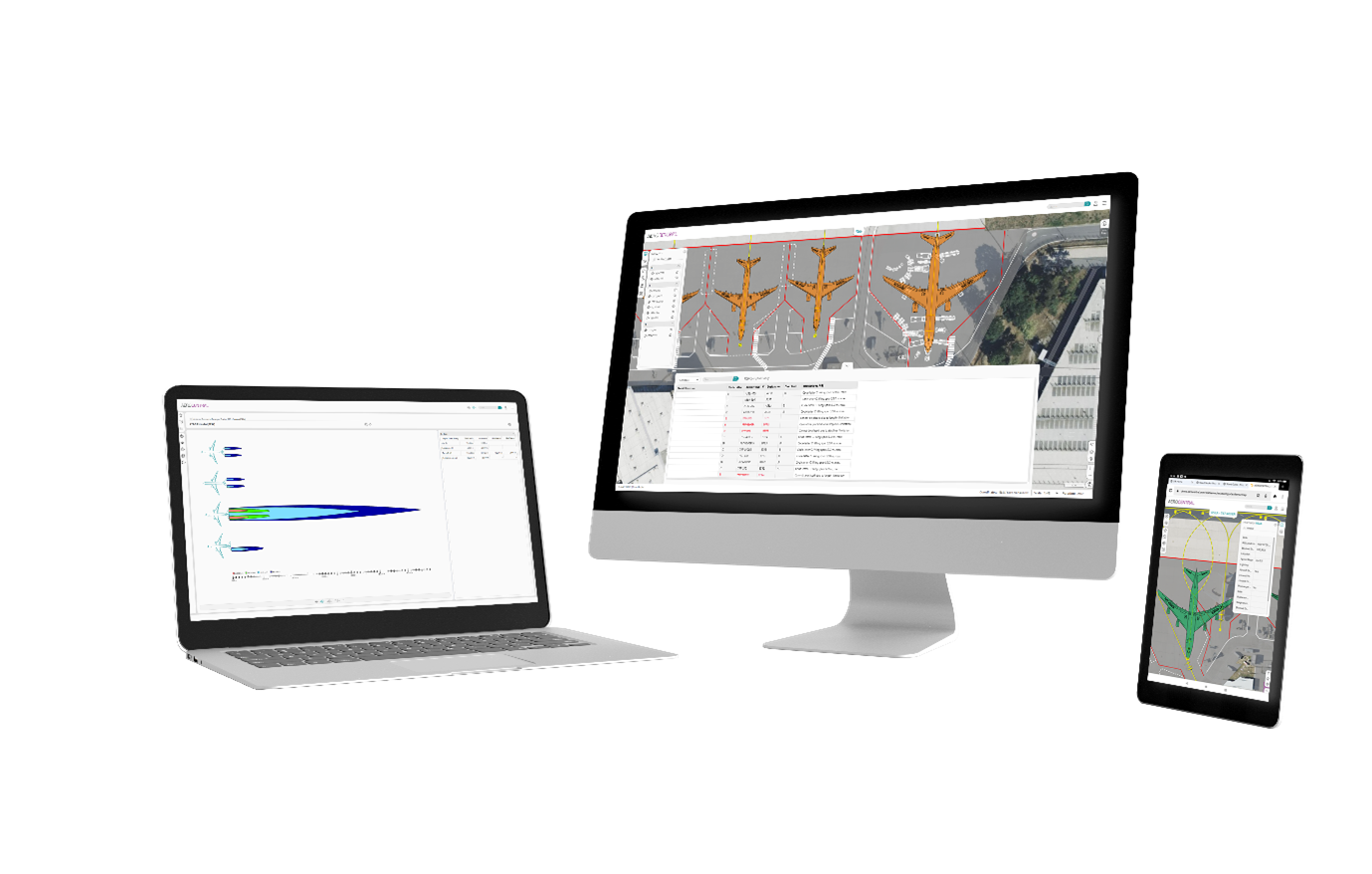Choosing a Centralized Information Platform for Your Airside Operations: Things To Consider
As the aviation industry embraces digital transformation, innovative solutions are redefining how airports manage operations, enhance safety, and optimize efficiency. One key consideration to take into account when moving in this direction is how to enhance the flow of critical airside information.

Figure 1. Example of a platform that allows multi-device, 24/7 access to centralized, role-based critical data throughout the entire lifecycle of airside planning and operations
Seamless data flow – a key component of efficient airside planning and operations
For those involved in airside planning and operations, sharing infrastructural and operational information between key stakeholders is often a cumbersome process of merging non-technical data with technical data and combining it with operational procedure data to create a workable (single source) manual for all airside stakeholders.
That’s why it’s important to take a full lifecycle perspective when choosing a data sharing platform. From design and construction over to ongoing operations and back to maintenance, ensure you achieve what is meaningful to your airports—immediate, accurate, and relevant critical data flow across all phases.
Questions to ask when selecting a platform
Questions will vary based on your operations, but a few suggestions are as below.
-
Speed of data access: Consider how much it reduces or eliminates reliance on static documents, which will ensure accurate and the latest information is always available. For example, when looking at aircraft parking and turnaround procedures, having 24/7 access to essential information from anywhere, with visually displayed aircraft stand configurations and turnaround procedures can be crucial for airport operations and turnaround process teams.
-
Management of planning and design changes: Airports frequently update operations to accommodate new aircraft, improve efficiency, or comply with regulatory changes. Inquire how much the system supports direct integration with external databases and operational planning tools, such as airside configurations planned in a CAD platform, helping teams share and implement changes seamlessly while minimizing miscommunication and disruptions.
-
Optimize data display for various roles: Look closely into how it presents the data to a complex matrix of user personas and levels of access to ensure that users receive only data relevant to their roles, enhancing efficiency while preventing information overload. Can baggage handlers only see the essential data they need rather than browsing through unnecessary information? If users in different roles need to navigate to their workplace, will the system provide information to locate themselves on a map and automatically filter the available information, or will they need to search for it?
-
Handling exceptional circumstances: When there are exceptional circumstances, such as extreme weather, large sporting events, political summits, etc., airport parking contingency scenarios must be put in place. See how well the platform can store and communicate these contingency plans, helping users adapt to dynamic conditions with minimal impact on operations.
About Transoft Solutions
Connect with us at Booth 212 at the 2025 AAAE/ACC Airport Symposium to discuss your unique challenges and discover how AeroCENTRAL, our platform streamlining data transfer from airside planning to operations, can support your goals.


